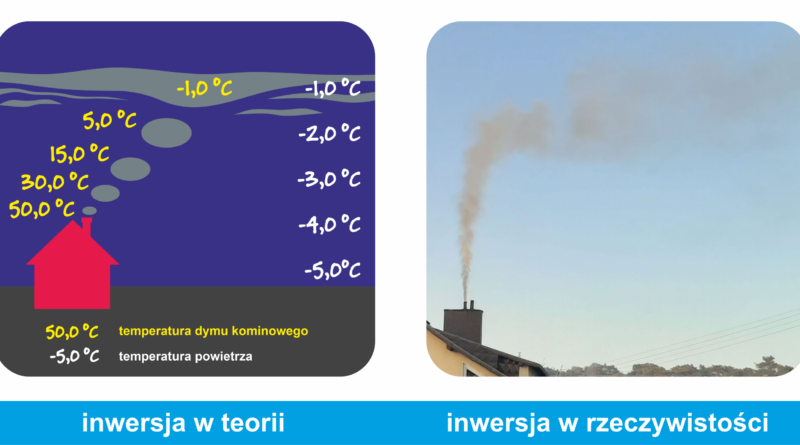Influence of temperature inversion on air quality
One of the processes limiting the negative influence of air pollution emitted from chimneys is the convection rising of warm smoke and its dispersion at high altitude. The height at which this occurs is however limited because the smoke gradually cools when rising. When its temperature equals the temperature of the surrounding air, the buoyancy force causing the rise disappears.
Thermal inversion, which is a gradual increase in air temperature with height, strongly affects this process, causing the air temperature to equalize quickly with the temperature of the rising smoke. Pollutants unable to float accumulate at a low altitude, in a layer of equal temperatures.
This problem particularly applies to emissions from small home chimneys. Low temperature of flue gases, their small volume and low height of chimneys cause the pollutants escaping from them to cool down and accumulate close to the earth’s surface, adversely affecting aerosanitary conditions.
The situation is aggravated by the fact that temperature inversions are usually accompanied by windless weather, which prevents cumulative pollution from being blown away. If such conditions persist for a long time, there is a significant deterioration in air quality, threatening health and even life.
